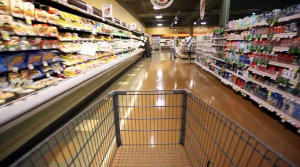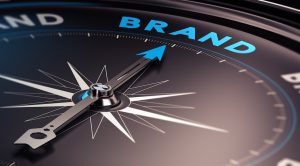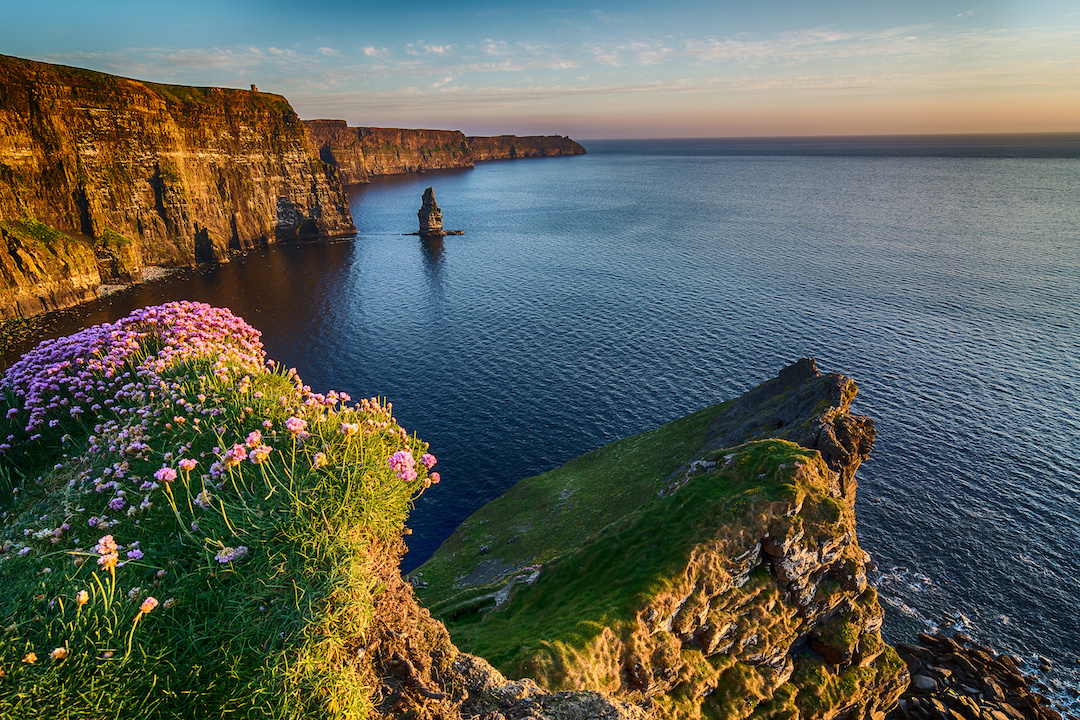Shelf Brand Positioning
 CPG brand builders are constantly jockeying for position. They know that their brand will live or die based on its position on the shelf. Too high, too hard to reach. Too low, won’t get noticed. Eye level is where they strive to be. And it’s a real struggle.
CPG brand builders are constantly jockeying for position. They know that their brand will live or die based on its position on the shelf. Too high, too hard to reach. Too low, won’t get noticed. Eye level is where they strive to be. And it’s a real struggle.
When you’re new and unknown, buyers tend to give you a placement on the bottom. This is double jeopardy. On the one hand, you have to prove yourself to the buyer with a certain amount of sales and a certain amount of days. On the other hand, you’re on the bottom which is the hardest position to sell from.
Savy CPG brand builders know their new branded products will be lost on the shelf anyway. So, they endeavor to win floor displays, so shoppers will literally run into their brand. This approach gets them noticed! But again, this is not an easy position to achieve. Typically you will have to offer the retail buyers some kind of temporary price reduction to justify their risk and purchasing a large quantity to build the display.
Floor displays must have compelling signage. But depending on the location of the floor display in the store, the dimensions of the signage can be very restrictive. For instance, when Barefoot wine was new, we couldn’t justify an end display of 50 cases. But we did achieve 10 case displays we euphemistically referred to as “Hang 10”. The initial display cards we developed were two tall and wound up being not allowed in most retailers. Why? Because the retailers thought that shoplifters would use them to hide behind!
The better your brand sells, the more likely it is to get eye level. Also, the more you merchandise your brand the more likely it is to earn that coveted position. This type of positioning is not something you can design on a screen. It’s not something you can put in a positioning statement. But this form of physical positioning is the lifeblood of CPG brand success!
Any discussion of brand positioning in the CPG space has to start with this understanding of how customers in the retail environment discover your branded product in the first place. Basically, is it in a position where it can be easily seen?
At Barefoot, we faced this challenge in every new chain store in which we were authorized. They put us on the bottom! They gave us like 90 days to sell 200 cases and 20 stores or face being discontinued from all 300 in the chain. We had to solve this very physical challenge and quick!
Our staff members were joking one day about this dilemma. “Well, I guess we’ll just have to go after the “foot traffic”. After all, our name is ‘Barefoot!’,” somebody joked. Then somebody else said, “Wait a minute, that’s not so crazy. We could have these wine-stained footprint decals on the floors and walk people down to the wine aisle and turn them to where our brand was positioned on the bottom shelf!” It worked! In fact, it works so well, we used them all over the country. People actually got used to looking for Barefoot on the bottom shelf.
To avoid fights between suppliers and to provide some order to category management, chain stores and big-box stores have adopted what they call a planner, planogram, or set diagram. It’s published every year usually in February and shows the physical position of every brand in a category. It shows the number of types under that label also known as facings, and their relationship to the other brands.
Depending on the store, depending on the category, and depending on the size of the set, these layouts can be ordered in different positioning philosophies. Some stores like to take advantage of the fact that customers read from left to right, so they might position their most expensive brands on the left of the category.
Some stores like to arrange their sets by brand names and cluster all the types that brand offers in one block devoted to that one brand. This provides an excellent billboard effect for brands with many types.
Some stores will group larger sizes by brand in smaller sizes by type. This is a problem for new brands in small sizes because they not only don’t benefit from a billboard effect, but their brand is now spread out throughout the category. At Barefoot, we chose to enter the market in the large volume size because we knew that most of the stores had brand sets for the larger sizes and it would give us the billboard effect we needed as a new brand. This is an example of positioning strategy where we actually had to choose our initial packaging size based on retail set philosophies.
Brand Positioning Factors
Now that we have discussed the overriding impact of where your brand winds up in the retail set positioning assignments with a few brand positioning examples, we can now continue with the discussion of brand positioning and the other important factors affecting CPG brands. So, aside from physical shelf position, what is brand positioning?
For product producers, it comes down to at least five important factors:
1. Price
 Achieving your desired price on the shelf at retail is one of the largest challenges any CPG brand builder faces. But it’s critical to your positioning strategy.
Achieving your desired price on the shelf at retail is one of the largest challenges any CPG brand builder faces. But it’s critical to your positioning strategy.
We recommend working backward.
- Start with the shelf price.
- Then figuring out what the retailer has to “see” sale (i.e. percentage of selling price which is profit to the retailer).
- Then figure out what the distributor, broker, jobber, or other middle person has to see.
- Then account for temporary price reductions, fees, taxes, and allowances.
- Then solve for and “discover” your FOB.
Before you got there, and long before you ever came up with your brand positioning statement, there existed in the marketplace a velocity price point for every type and every size in your category. Those velocity price points are the prices at which the majority of products within those parameters move the fastest.
Your final price position on the retail self, vis-à-vis your category’s velocity price point, will peg your product as high-end, average priced, or low-priced. It’s hard to sell value at low prices because the market believes nothing really good and come at a low price. On the other hand, expect a much lower sales volume at the higher price points.
2. Message
This is why message is so important. If you are attempting, as we were, to sell high value at low price, you face a serious selling challenge. You must overcome the prejudice that nothing good can come “cheap”.
If your message is economy, you must demonstrate price for volume or durability. You must offer superior volume for price.
If your message is status, you must demonstrate that your product is well worth the extra expense.
At retail, with the consumer product, your message is limited to the harsh realities of the retail marketplace. So, it must be short and sweet, and to the point. The least amount of words with the most compelling message, used consistently, is the best chance you have of getting your message across.
3. Image
Your image conveys your message. Your logo, label, choice of fonts, choice of colors, catchphrase, and signage must all conform to the retail environment.
Your image is how your customers know your product. It’s how they remember it, and it is how they find it. How your branded product appears is essential to a successful brand positioning strategy.
Most CPG products have small labels, usually no more than 3” x 3”. That’s a very small footprint to say what you want to say and still be read. Many brand builders try to say too much on their label, and as a result, create a jumbled mess that can’t be read from 4 feet away from where she’s pushing her cart.
The labeling requirements alone use up most of the space on the label. They include the name of the commodity, the volume or weight, and any government requirements. Then there’s your brand name, your logo, and perhaps a slogan or a catchphrase. Now add to that the white space that is necessary to make your logo pop and give your label a clean easy-to-read image. Now there’s a real challenge, especially if your label is on a curved or an even package where the readable surface area is even further diminished.
Most marketing folks will tell you that your image is much more than how your package looks. They’ll tell you it has to do with how your advertising positions your brand. But we have found, in our own real-world experience, that where your product, the customer, the money, and the decision all come together is at the point of purchase. In other words, it’s how you look on the shelf, more than what you say in other media, that ultimately makes the sale in the retail store.
4. Reputation
 Try as you may to convey an image to help position your brand, we have found that the most powerful influence on positioning is reputation. It’s not so much what you say about your brand, as it as it is what others say, and what your customer’s experience has been.
Try as you may to convey an image to help position your brand, we have found that the most powerful influence on positioning is reputation. It’s not so much what you say about your brand, as it as it is what others say, and what your customer’s experience has been.
In the retail space, the best way to position your brand, outside of pricing, is with third-party endorsements. These can be contest wins, awards, and recommendations from happy users and noted celebrities.
At Barefoot wine, for instance, we were attempting to position our brand as high value for low price. How are you going to get that message across in such a confined format? What is the one piece of advertising material that makes it to the shelf every time? It’s the label and the package itself.
We decided to put our gold medals right on our products. It took us two years to develop the machinery that would apply the metals consistently and centered exactly over the label. But the efforts were worth it. We got a credible third-party endorsement across to our customers in the least amount of space.
5. Perception
You don’t own your brand. Your customer does! It’s their perception of your brand, and what it represents, that impacts their decision. Sure, that perception is influenced by your messaging, whether through advertising, signage, or packaging. But it is still their perception.
Before they buy it for the first time, most of their perception is based on what they’ve heard about your brand and how it’s priced. Once they’ve bought it for the first time, their perception is based on their own experience with your brand.
But even after you’ve made the sale, their perception can change based on poor customer service. Successful brand builders that realize even though they are selling a branded product, they are really in the service business.
Negative news about your company’s policies and behavior with regard to health, employees, or the environment can dramatically affect your customer’s perception. They want to support brands they perceive as doing the right thing all the way around.
Repositioning and rebranding can also hurt your customer’s perception of your brand. It’s taken them years to become familiar with where your brand is positioned with regard to price, quality, performance, and location in the store. Sudden changes can confuse your customers and lose them other brands. This is why we say, “When it comes to rebranding use evolution not revolution!”
Successful brand builders in the CPG space will carefully craft their brand positioning strategy to employ these five factors in the most effective way. They will spend more time in the marketplace taking careful note of what works and what doesn’t before they ever sit down to a keyboard and monitor. They know that brand positioning is all relative to other brands that are already out there. They will work backwards from the shelf on their pricing and spend more time on label design. And they will protect their reputation and customer’s perception with excellent customer service and a company your customer is proud to patronize!

